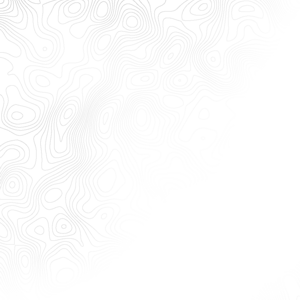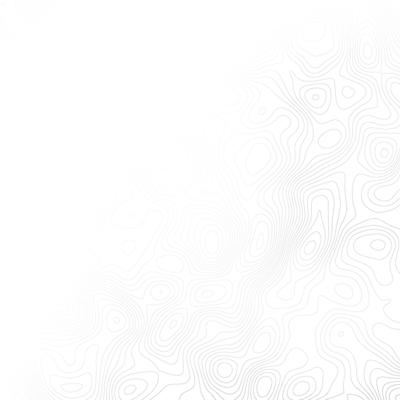
Conservation Storytelling With Photography
Fantastic! Your organization has excellent photos on Instagram! Everyone is hitting the heart button to show their love. But is that enough?
Probably not.
You want people to do more than just heart your photos all day.
The best conservation photos tell a story rather than just capture a scene.
On Instagram, it’s easy to think otherwise. It only takes a few seconds to look at a photo and tap the heart on Instagram. After a while that can almost become robotic for most Instagram users. As an organization, you want and need more.
You’ve heard lots about storytelling. But mostly that has involved video. So let’s back up a bit and remember that photos are a great fit for storytelling too.
Yes, a photo can tell a thousands word. But it can only do that when we approach it with the right mindset.
Here are 10 tips to add storytelling to your photos about conservation, nature and the environment:
Tell a story from different angles
The easiest photo is point and shoot and be done. The trouble is that’s usually done at the same eye-level height every time. Humans see the world at eye level every day. If you’re capturing everything at eye level you’re simply duplicating what your audience sees. That’s boring. The more thoughtful photos take a moment to look at various angles before the shutter is clicked. Get on your stomach and get down low. Get high. Add something into the foreground to create depth in your shot. Zoom in to emphasize details. Ask yourself: How can I capture this in a way that gives the audience a view or perspective that they don’t see every day? Your audience will look at photos longer when they feel they are being immersed in it. Different angles that are unusual from their every day eye-level life do exactly that.
Leverage the background
One of the most forgotten aspects of photographs is the background. We get so focused on the person in a photo, that we forget to check the background to see what’s in it. Sometimes there are embarrassing things that we missed. Or sometimes there’s very little that complements the photo. You need to keep visual distractions to a minimum. As a photographer, you need to take command of the entire frame. What story is the entire frame showing and telling? Does the entire frame have the elements that will help help tell that story? Or distractions? Or is it so vague that the only way people will have a clue what it is about, is by reading your 300-word post below the Instagram photo? (Pro tip: Very few people will read those 300 words).
Create a shot list
Planning has become a lost photography skill when it comes to taking photos, especially in the smartphone era. Professional photographers use shot planning every day. They have to. Without planning, photos will be lacklustre and nothing more than something you’d come to expect in an outdated family photo album. You won’t get fresh angles if you don’t plan. That planning may involve doing research on the location, using Google Earth to get a better sense of the landscape and features, or looking up what other photographers have done at the same location.
The power of lighting
Light can change everything. The textures on a face. The ripples on water. The ridges on rocks. Professional photographers leverage light by carefully choosing the time of the day. Early morning and late afternoon sun are especially sought after as the lighting the light is softer and has warmth. Cloudy days are like giant softboxes and a favourite too. Harsh midday lighting is often a photo-breaker by blowing out highlights and flattening out textures and faces. But sometimes it not just about time of day, but how and where the lighting or sun falls. It might be a photo deep in the forest, but a small cascade of sun gently beams down from the tree canopy and lights up your subject.
Know the ‘Why’ before you click
Before you can tell a story with a photograph you must take step back and ask yourself “What is the story that I want to tell and why?” If you know why you want to capture the photo, you’ll be much further ahead planning its composition. All the technical know-how, nailing your focus and ISO, and exposure won’t produce a photo that tells a story. Knowing the ‘why’ will. Tip: Keep reading below to learn about the other 4 Ws.
Process of elimination
It’s tough sometimes to be your own critic or throw out images. But you need to do both. If a photo is lacking an element or contains an element that confuses the viewer, it might be a photo that you have to exclude. Yes, it’s tough to do. But you’ll quickly learn to think about composition a lot faster in the field when you begin to be your own critic by shortlisting photos and cutting those that don’t make the cut for telling the intended story.
Also know the Who, When, Where, and What
My background in journalism and media taught me the importance of knowing the 5 Ws: who (subject), what (the action), where (sense of place), when (time of day or season). Photographers usually don’t incorporate the 5 Ws into their planning but it’s worth trying. The 5 Ws are principle components of any narrative. There are stories in landscapes. For example, if a landscape is inspiring, what (location) can you highlight in the future that captures that inspiration? It could be big, small, or closeup details.
Make the viewer think
OK, sometimes the ‘story’ isn’t always obvious at first or even second glance. But a compelling photo can still be part of a narrative. That’s because a photo can trigger a different kind of action. It can cause the viewer to question something in it, leading them to research a topic. Photos that cause people to go in search of answers are powerful too.
The power of colours
I’ll try to make this less about colour theory and more about two simple colour concepts: Warm vs cool. When we talk about these two terms in photography, we’re talking about colour temperature. If you use Instagram, you’ll know all about this thanks to the Warmth tool in Instagram’s Edit tools. Slide the Warmth right and you will warm up your photo toward the red spectrum. Slide it left and you will cool down your photo toward the blue spectrum. It’s true that humans do react subconsciously to colours. That means you can use colour to influence how a viewer feels when they look at your conservation photographs. Warm colours are inviting and stimulating. They help to create a mood of happiness, excitement or optimism. Cool colours tend to evoke feelings of calm and tranquility. Also, think about those photos of a lone polar bear against a vast Arctic landscape of snow. Many of these photos are on the cooler ‘blue’ side of the spectrum. These ‘cooler’ photos can also convey loneliness. Of course, everyone reacts differently to photos but this a general outlook.
One shot? Or a series of shots?
I’ve deliberately left this one until the end. It’s not uncommon to hear photographers discuss whether a single photo can be a narrative, or whether you need a series of photos. I like to think of it this way, in journalism terms. Some media outlets like to create news that is is very very short sound bites or written news bites. Other media outlets like to give more expanded coverage. Which media is only providing part of the story vs the full story? There’s always a bigger picture. You can tell half of it. Or all of it. We can’t always rely on audiences to figure it out or understand the message we are trying to show in just a single image. Think of a photographic narrative this way: Each photo is like a chapter in a book. There are beginnings, middles, and ends to every story. That’s a lot to cram into one photo.
- Job Interviews: Crafting Your Response to “Where Do You Want to Be in Five Years?” - June 15, 2024
- How Contract Jobs Pave the Way to Full-Time Positions in Conservation - April 26, 2024
- Career Help: How to Gain Experience in Conservation Field - February 23, 2024



